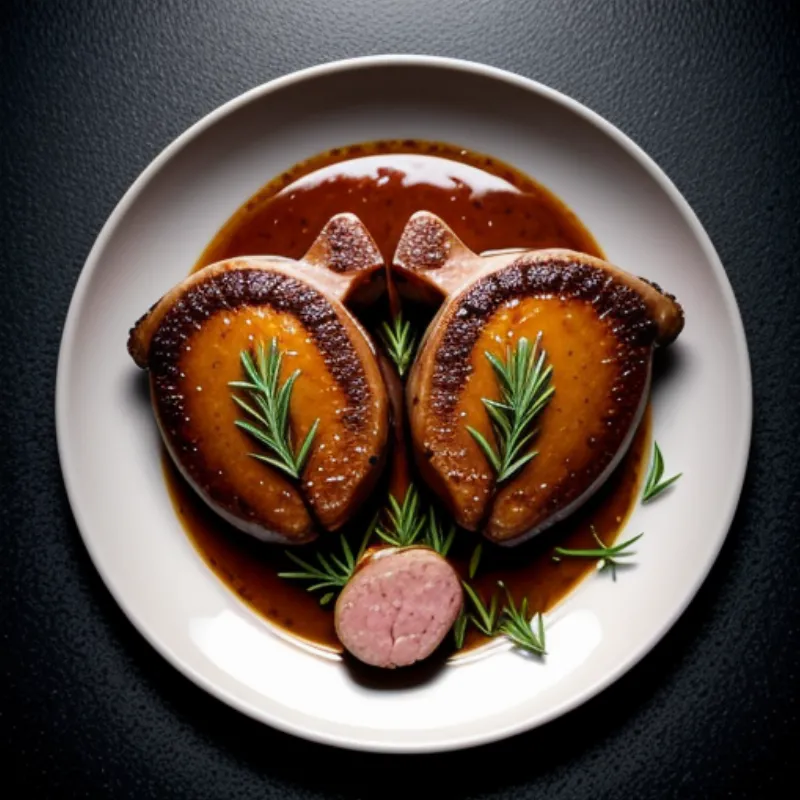Robert Sauce, with its velvety texture and unique sweet and savory flavor profile, might sound like a sophisticated culinary creation reserved for fancy restaurants. However, this classic French sauce is surprisingly easy to make at home, even for beginner cooks. Join me as we embark on a flavorful journey to recreate this historical sauce, perfect for elevating everyday meals to a whole new level of deliciousness!
Unveiling the History and Flavor of Robert Sauce
This sauce takes us back to the 16th century, where legend has it that King Henry IV of France was particularly fond of a simple onion sauce. One day, while the King was dining, his personal chef, a certain “Monsieur Robert,” decided to add a touch of mustard, creating a sauce that surprised and delighted the King. Thus, Robert Sauce was born!
The magic of Robert Sauce lies in the balance of flavors. The sweetness of caramelized onions, the tanginess of vinegar and lemon, and the subtle heat of black peppercorns create a symphony that dances on your taste buds. It’s no wonder this sauce has stood the test of time!
Crafting Your Own Robert Sauce: A Step-by-Step Guide
Ingredients: Your Flavor Palette
The Essentials:
- 2 tablespoons unsalted butter
- 2 large yellow onions, thinly sliced
- 1 tablespoon all-purpose flour
- 1 cup beef broth
- 2 tablespoons Dijon mustard
- 1 tablespoon red wine vinegar
- 1 teaspoon sugar
- Salt and freshly ground black pepper to taste
A Touch of Magic (Optional):
- 1 bay leaf
- 1/2 teaspoon dried thyme
- 1 tablespoon chopped fresh parsley for garnish
Tools of the Trade:
- A large skillet or saucepan
- A wooden spoon or heatproof spatula
- Measuring cups and spoons
Let’s Get Cooking!
- Caramelize the Onions: Melt the butter in your skillet over medium heat. Add the sliced onions and cook, stirring occasionally, until they turn a beautiful golden brown and caramelized. This slow cooking process is key to developing the sauce’s signature sweetness.
- Create the Base: Sprinkle the flour over the caramelized onions and cook for about 2 minutes, stirring constantly. This step, called making a roux, helps thicken the sauce.
- Add the Liquid: Gradually whisk in the beef broth, ensuring there are no lumps. Bring the mixture to a simmer, then reduce the heat to low.
- Infuse with Flavor: Stir in the Dijon mustard, red wine vinegar, and sugar. If using, add the bay leaf and thyme as well.
- Simmer to Perfection: Allow the sauce to simmer gently for about 10 minutes, stirring occasionally. This allows the flavors to meld and the sauce to thicken.
- Season and Adjust: Taste and season generously with salt and freshly ground black pepper. You can adjust the sweetness or acidity to your liking with a touch more sugar or vinegar.
- Final Flourish: Remove the bay leaf if used. Just before serving, stir in 1 tablespoon of cold butter for extra richness and shine (optional). Garnish with fresh parsley for a touch of color.
 Robert sauce simmering in a pan
Robert sauce simmering in a pan
Tips for Robert Sauce Success:
- Patience with Onions: Don’t rush the caramelization process. The onions should be a deep golden brown for the best flavor.
- Lump-Free Sauce: Whisk the broth gradually into the flour to prevent lumps. If lumps do form, strain the sauce through a fine-mesh sieve.
- Flavor Balance: Taste and adjust the seasoning as needed. Robert Sauce should have a harmonious balance of sweet, savory, tangy, and slightly spicy notes.
FAQs: Addressing Your Robert Sauce Queries
Q: Can I use chicken broth instead of beef broth?
A: Absolutely! Chicken broth works well as a substitute for beef broth.
Q: I don’t have Dijon mustard. What can I use instead?
A: While Dijon mustard provides the classic Robert Sauce flavor, you can substitute it with whole grain mustard or even a spicy brown mustard for a different twist.
Q: How long can I store Robert Sauce?
A: Robert Sauce can be stored in an airtight container in the refrigerator for up to 4 days.
Serving Up Robert Sauce: A Culinary Adventure
Robert Sauce is incredibly versatile and pairs beautifully with a variety of dishes. Here are a few ideas to get you started:
- Classic Pairing: Serve it over grilled or pan-seared pork chops for a truly French culinary experience.
- Hearty Comfort Food: Spoon it generously over mashed potatoes or roasted root vegetables for a comforting side dish.
- Elegant Sandwiches: Elevate your sandwiches by using Robert Sauce as a spread for roast beef or grilled chicken.
- Creative Twist: Toss cooked pasta with Robert Sauce and sautéed mushrooms for a unique and flavorful pasta dish.
 Robert sauce served with grilled pork chops
Robert sauce served with grilled pork chops
Embrace the Joy of Homemade Sauces
Making your own Robert Sauce is easier than you might think, and the reward is a flavor explosion that will impress your family and friends. As Chef Pierre Dubois, author of “The Art of French Sauces” says, “A well-made sauce can transform a simple dish into a culinary masterpiece.” So, why not embark on your own sauce-making adventure today? You might be surprised at the hidden culinary talents you discover!
Don’t forget to share your Robert Sauce creations and culinary adventures in the comments below! We’d love to hear your feedback and any variations you come up with. Happy cooking!
